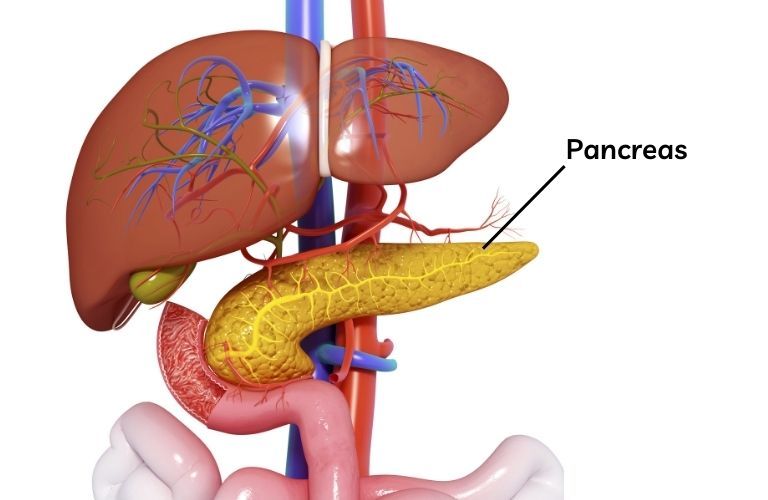
The pancreas is a glandular organ located in the abdomen, behind the stomach.
Pancreas Function
Endocrine Function
As an endocrine gland, the pancreas produces hormones such as insulin and glucagon that regulate blood sugar levels.
Exocrine Function
As an exocrine gland, the pancreas produces digestive enzymes that are released into the small intestine to help break down proteins, carbohydrates, and fats.
Bicarbonate Production
The pancreas also produces bicarbonate, a substance that neutralizes stomach acid as it enters the small intestine.
Blood Supply
The pancreas is supplied with blood by the pancreaticoduodenal arteries, which branch off of the superior mesenteric artery and the celiac artery.
Innervation
The pancreas is innervated by the vagus nerve and the sympathetic nervous system.
Function in Digestion
The pancreas plays a crucial role in digestion by producing enzymes that break down carbohydrates, proteins, and fats. These enzymes include amylase, which breaks down carbohydrates; proteases, which break down proteins; and lipases, which break down fats.
Function in Blood Sugar Regulation
The pancreas also plays a crucial role in regulating blood sugar levels by producing the hormones insulin and glucagon. Insulin helps to lower blood sugar levels by allowing cells to take up glucose from the bloodstream, while glucagon helps to raise blood sugar levels by stimulating the liver to release glucose into the bloodstream.
Diseases of the Pancreas
Diseases of the pancreas include pancreatitis, pancreatic cancer, and diabetes.
Pancreatitis
Pancreatitis is inflammation of the pancreas, often caused by alcohol abuse or gallstones.
Pancreatic Cancer
Pancreatic cancer is a type of cancer that originates in the pancreas.
Diabetes
Diabetes is a metabolic disorder characterized by high blood sugar levels due to a lack of insulin or insulin resistance.
Pancreas Anatomy
The pancreas is a long, flat gland that is about six inches (15 cm) long and located in the upper abdomen. It is divided into three parts: the head, the body, and the tail. The head of the pancreas is on the right side of the abdomen and is connected to the duodenum (the first part of the small intestine) by the pancreatic duct. The body of the pancreas is in the center of the abdomen, and the tail of the pancreas is on the left side of the abdomen.
In conclusion, the pancreas is an important organ that plays a crucial role in both digestion and blood sugar regulation. As an exocrine gland, it produces digestive enzymes that help to break down carbohydrates, proteins, and fats in the small intestine. As an endocrine gland, it produces hormones such as insulin and glucagon that regulate blood sugar levels. Diseases of the pancreas include pancreatitis, pancreatic cancer, and diabetes. The pancreas is supplied with blood by the pancreaticoduodenal arteries and is innervated by the vagus nerve and the sympathetic nervous system.
